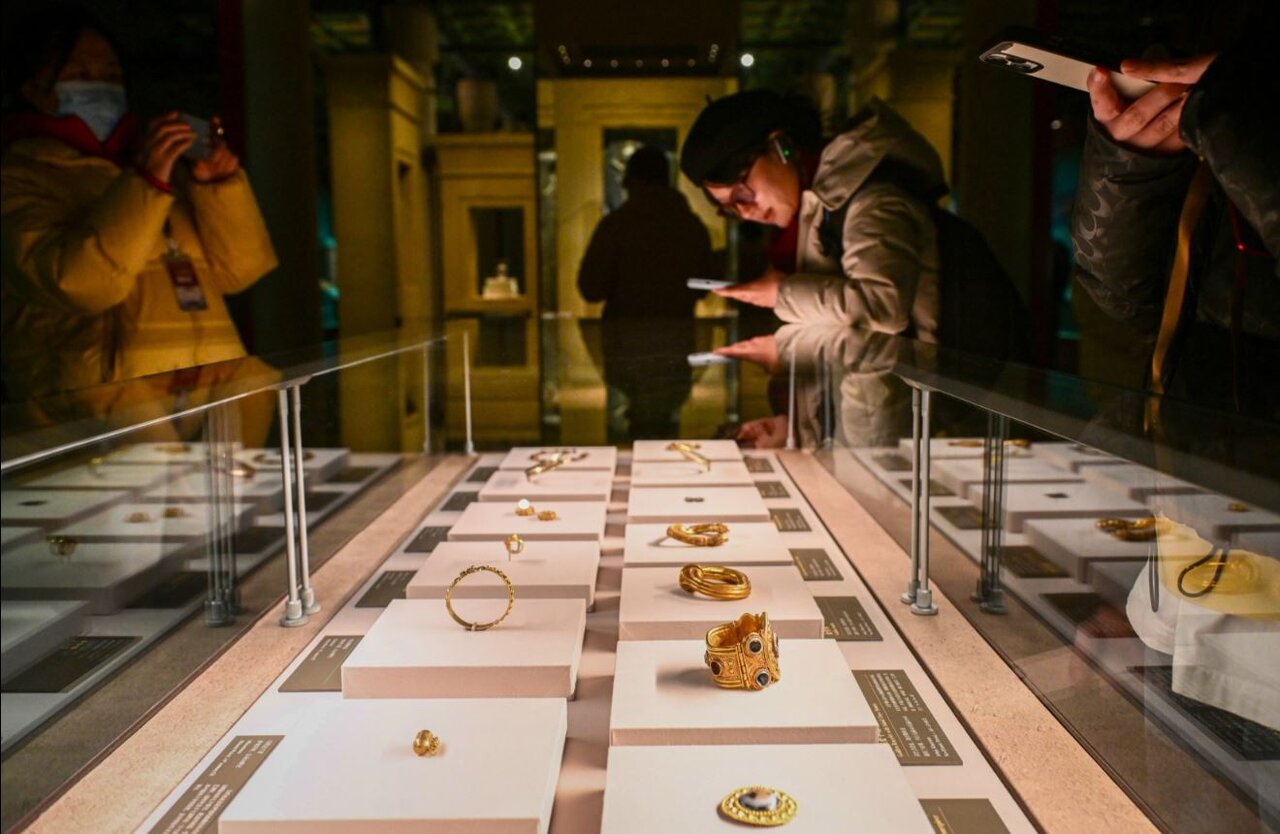TEHRAN – Dating its historical roots back to more than two millennia, tens of Persian relics, after 90 days of display in Beijing’s Palace Museum, are ready to resume their journey to alluring enthusiasts by being put on show for another three months in Shanghai Museum.
“The glory of the ancient Persia: Exhibition of Iranian cultural relics” attracted thousands of visitors and occurred from January 11 to April 12 in Beijing’s Palace Museum [The Forbidden City].
Starting from the prehistoric period, the loan exhibition presents a panorama of Iranian history through the Achaemenid, Parthian and Sasanian empires, to the Islamic dynasties that followed.
As revealed by Iranian officials, the same event is arranged to captivate visitors, taking place in Shanghai to complete the aforethought six months of display across China.
“Iran is located at what was a crossroads of East-West cultural communication in ancient times, and its art combined elements from various cultures,” noted Zhai Yi, a researcher at the Palace Museum and the curator of the exhibition. “It was influenced by many regions across Eurasia.”
“From the precious collections of palaces to articles of daily use, in this exhibition, we want to reflect the marvelous material cultural heritage left by ancient Persia within the greater context of mutual learning between civilizations,” she added.
“Persian civilization had an inclusive cultural ethos,” Zhai stated in her concluding remarks, “In the confluence and mutual learning between cultures, it continues to reveal its brilliance and magnificence, even today.”
Testifying the undeniable value of the ancient collection, a delicate Achaemenid golden rhyton (a conical drinking cup, sometimes used for ceremonial purposes) emblazoned with a winged lion has been displayed to the visitors.
It is noteworthy that there are only two of these distinctive Persian golden rhytons around the world, with one of them being held in the Metropolitan Museum of Art.
Attending the opening ceremony of the Beijing’s Exhibition of Iranian cultural relics, Ali Darabi, the Iranian deputy minister of Cultural Heritage, Tourism and Handicrafts pinpointed that a Chinese official in charge of cultural heritage museums had expressed readiness to host the exhibition in approximately 100 locations across the country.
More than 200 Persian relics which are being put on show, including the golden rhyton, have been insured for 114.250,000 euros by the Chinese government, which is committed to their protection and exhibition.
It was a surge that reflects a renewed interest in Iran's rich cultural and historical heritage, as both domestic and international tourists flock to explore the country's treasures.
Iran, an ancient land steeped in history, boasts one of the world's oldest continuous major civilizations, with settlements dating back to 4000 BC. It is adorned with a wealth of cultural treasures, including bazaars, museums, mosques, bridges, bathhouses, madrasas, gardens, and diverse natural landscapes, complemented by 27 UNESCO World Heritage sites.
While commonly associated with the first Persian Empire ruled by the Achaemenids (ca. 550–330 BC), under notable sites such as Pasargadae and Persepolis, Iran's historical tapestry is far richer. The country is adorned with numerous prehistorical sites predating the Achaemenid era. These include the Burnt City in Sistan-Baluchestan, Tepe Sialk in Kashan, Susa and Chogha Zanbil in the Khuzestan province, and Ecbatana in Hamedan.
Viewed through a broader lens, Iranian history unfolds in two distinct eras: Pre-Islamic and Islamic. The rise of the Medes in 625 BC marked the unification of Iran into a nation and empire. However, it was the Islamic conquest of Persia (633–656) that signaled a pivotal moment, bringing an end to the powerful Sassanid Empire (224–651) and reshaping the course of the nation's history.


No comments:
Post a Comment